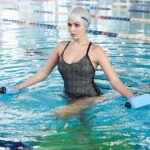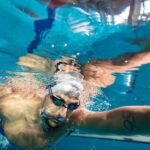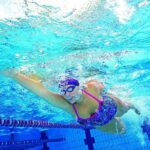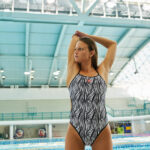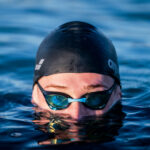CrossFit: pros and cons for swimming
Let’s take a look at the pros and cons of CrossFit as supplementary training for swimming.
Today we’re going to talk about a rather recent innovation in sports training that could be introduced into the swimming. I am talking about CrossFit.
Could CrossFit be useful for a swimmer? Yes, but…. But first of all let’s explain what it is all about.
CrossFit first came on the scene in 2000 and is now a widely practiced competitive sport worldwide that is now well and truly part of the fitness world.
Training involves all kinds of different exercises: bodyweight exercises, exercises using equipment like medicine balls or kettle bells, and even Olympic weightlifting drills. All exercises stimulating different muscle groups and rely heavily on core strength.
All these exercises are usually combined into circuits creating high-intensity training sessions called WODs.
WODs (workouts of the day) are often timed, so every training session turns into a kind of competition against yourself. A WOD can last as long as 10 minutes or more and their high intensity generates plenty of lactic acid, so that you end up feeling extremely fatigued.
Summing up what we have just said:
- Use of different muscle groups at the same time
- Focused around core strength
- Lasting even longer than 10 minutes
- Timed
- Performance-related
- High-intensity
- Generating lactic acid
Does this list remind you of anything? There are plenty of similarities with swimming, most notably in the use of training sets focusing on speed, speed endurance and aerobic/anaerobic capacity.
The points listed above are the PROs of CrossFit in relation to swimming. There are definite similarities and so it could be a really functional kind of training for a swimmer!
Of course when there are PROs there are inevitably CONs that need to be considered, more specifically:
1. Sometimes the internal training load of a specific exercise is not sufficiently precise or given due consideration. To explain what an internal training load is, imagine you have two people in front of you, one trained and the other untrained. They are both asked to lift a 50 kg weight. 50 kg is the external (objective) training load; somebody who is trained will have a lower internal (subjective) training load, because it will be easier for them to lift this weight. Some WODs do not take this into account, because they have standard external training loads, differing only for men and women.
2. The exercises are not easy. The movements to be performed are often complicated and technique is extremely important. Without good technique the risk of injury is extremely high. Moreover, bearing in mind that fatigue kicks in at a certain point in the WOD, the risk of hurting yourself is even higher, because you will not be thinking clearly while performing the exercise. This is even more relevant for swimmers, because they are used to a watery environment that is semi-lacking in gravity and so their joints and muscles are not “set” properly for dry land.
In conclusion, if you plan to try out CrossFit, you can be assured that it will help your swimming.
My advice is to consult an expert before you start, so that you can learn exactly the right technique for the exercises and be able to take on WODs without getting injured.
Enjoy your training!
Written by:
Manuele Trezzi
A top-class swimmer who still competes, he has taken part in and reached the finals of Italian championships, as well as winning lots of regional titles. A FIN swimming instructor and trainer, FIT fitness trainer for tennis, and a graduate in the Motor Sciences from Milan State University, he has been working all these fields since the beginning of 2013.
